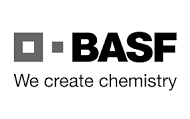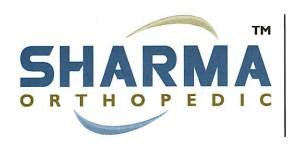1st August,2023
The Chief Manager, Business Intelligence & Analysis
Kenya Revenue Authority
Times Towers
Nairobi, Kenya
Dear Madam,
REF: Application for Advance Ruling for Agnucaston® Film-Coated Tablets
We are writing on behalf of our principal, Austell Pharmaceuticals (Pty) Ltd, to request for a HS classification, advance ruling, for Agnucaston® Film-Coated Tablets. The application is done ,as per section 248(A) of EACCMA. Our proposed HS Classification is 3004.90.00
The structure of the application consists of:
- Description of the functions of the product
- Extracts from the applicable legal notes, followed by our analysis, highlighted in red and enclosed in a text box. The most important Explanatory Notes are underlined.
Description of Product
One Agnucaston tablet contains 4 mg of Vitex agnus castus L. (Agnus castus chaste tree fruit) which is the
pharmacologically active ingredient. The other ingredients are povidone 30, silica, colloidal anhydrous ,potato starch, lactose monohydrate , microcrystalline cellulose, magnesium stearate (vegetable), ammonio methacrylate copolymer (type A), indigo carmine laquer (E 132) , iron oxide yellow (E 172) ,macrogol 6000
talc, titanium dioxide (E 171). One Agnucaston® contains approximately 0,1 carbohydrates on average.
Agnucaston® is used for treatment of symptoms such as breast tenderness and swelling, mood alteration, abdominal bloating, oedema, and headache prior to menstruation.
Please refer to the Patient Information Leaflet and the Product Sample for more information
What is Vitex Agnus Castus
Vitex agnus-castus (also called vitex, chaste tree / chaste tree, chasteberry, Abraham’s balm, lilac chaste tree, or monk’s pepper) is a plant native of the Mediterranean region. It is one of the few temperate-zone species of Vitex, which is on the whole a genus of tropical and subtropical flowering plants.
The leaves and tender stem growth of the upper 10 cm (3.9 in), along with the flowers and ripening seeds, are harvested for alternative medicinal purposes.
Vitex Agnus-Castus is a herb used by natural health practitioners for treating female menstrual hormone imbalances, both minor and major ones – such as Polycystic Ovarian Syndrome (PCOS). Women with menstrual cycle irregularities often do not produce enough progesterone during the second phase of their menstrual cycle (luteal phase). This means that oestrogen, the dominant female hormone in the first phase, continues to dominate in the second phase leading to menstrual cycle abnormalities.
Vitex works on the pituitary gland, which is responsible for signalling the body to make the appropriate amounts of each hormone. This helps regulate menstrual cycles and relieve unpleasant menstrual symptoms, including headaches. It is also used in the treatment of menopausal symptoms.
| The Chaste tree fruit extract is classifiable under heading 1302.19. Products of heading 1302 have a variety of medicinal uses as illustrated by the Explanatory Notes extracted below. |
Chapter 13 Explanatory Notes
Lac; gums, resins and other vegetable saps and extracts
Note.
1.- Heading 13.02 applies, inter alia, to liquorice extract and extract of pyrethrum, extract of hops, extract of aloes and opium.
The heading does not apply to :
(g) Medicaments of heading 30.03 or 30.04 or blood‑grouping reagents (heading 38.22);
| The note above tells us that products of heading 1302 when put up as medicaments are excluded from heading 13.02. |
Heading 13.02 Explanatory Notes
13.02 ‑ Vegetable saps and extracts; pectic substances, pectinates and pectates; agar-agar and other mucilages and thickeners, whether or not modified, derived from vegetable products.
1302.1 ‑ Vegetable saps and extracts :
1302.11 ‑ ‑ Opium
1302.12 ‑ ‑ Of liquorice
1302.13 ‑ ‑ Of hops
1302.14 ‑ ‑ Of ephedra
1302.19 ‑ ‑ Other
1302.20 ‑ Pectic substances, pectinates and pectates
1302.3 ‑ Mucilages and thickeners, whether or not modified, derived from vegetable products :
1302.31 ‑ ‑ Agar‑agar
1302.32 ‑ ‑ Mucilages and thickeners, whether or not modified, derived from locust beans, locust bean seeds or guar seeds
1302.39 ‑ ‑ Other
(A) Vegetable saps and extracts.
The heading covers vegetable saps (vegetable products usually obtained by natural exudation or incision) and extracts (vegetable products extracted from the original vegetable material by solvents), provided that they are not specified or included in more specific headings of the Nomenclature (see list of exclusions at the end of Part (A) of this Explanatory Note).
These saps and extracts differ from the essential oils, resinoids and extracted oleoresins of heading 33.01, in that, apart from volatile odoriferous constituents, they contain a far higher proportion of other plant substances (e.g., chlorophyll, tannins, bitter principles, carbohydrates and other extractive matter).
The saps and extracts classified here include :
(1) Opium, the dried sap of the unripe capsules of the poppy (Papaver somniferum) obtained by incision of, or by extraction from, the stems or seed pods. It is generally in the form of balls or cakes of varying size and shape. However, concentrates of poppy straw containing not less than 50 % by weight of alkaloids are excluded from this heading (see Note 1 (f) to this Chapter).
(2) Liquorice extracted from the dried roots of a plant of the Leguminosae family (Glycyrrhiza glabra) by hot water under pressure and then concentrated. It may be in liquid form or in blocks, cakes, sticks, slices or powder. (Liquorice containing more than 10 % by weight of sucrose, or put up (i.e., prepared) as confectionery whatever the sugar content, is excluded, see heading 17.04.)
(3) Extract of hops.
(4) Pyrethrum extract, obtained mainly from the flowers of various pyrethrum varieties (e.g., Chrysanthemum cinerariaefolium) by extraction with an organic solvent such as normal hexane or “petroleum ether”.
(5) Extracts of the roots of plants containing rotenone (derris, cubé, timbo, barbasco, etc.).
(6) Extracts and tinctures of any plant of the genus Cannabis.
Cannabis resin, whether crude or purified, is excluded (heading 13.01).
(7) Ginseng extract, obtained by water or alcohol extraction, whether or not put up for retail sale.
Mixtures of ginseng extract with other ingredients (e.g., lactose or glucose) used for the preparation of ginseng “tea” or beverage are excluded (heading 21.06).
(8) Aloes, a thickened sap with a very bitter taste, obtained from several varieties of the plant with the same name (Liliaceae family).
(9) Podophyllum, a resinous substance extracted by alcohol from the dried rhizomes of Podophyllum peltatum.
(10) Curare, an aqueous extract from the leaves and bark of various plants of the Strychnos family.
(11) Quassia amara extract, obtained from the wood of the shrub of the same name (Simaroubaceae family), which grows in South America.
Quassin, the principal bitter extract of the wood of the Quassia amara, is a heterocyclic compound of heading 29.32.
(12) Other medicinal extracts, e.g., belladonna, black alder (alder buckthorn), cascara sagrada, garlic, gentian, jalap, cinchona, rhubarb, sarsaparilla, tamarind, valerian, pine buds, coca, colocynth, male fern, witch hazel, henbane, ergot of rye.
| Sub note 12 provides examples of medicinal extracts of products of chapter 13. |
(13) Manna, a solid, sweet sap obtained by incision from certain varieties of ash tree.
(14) Bird lime, the viscous and stringy glue, greenish in colour, extracted from mistletoe berries or holly.
(15) Aqueous extract obtained from cassia pulp. Cassia pods and cassia pulp are, however, excluded (heading 12.11).
(16) Gum kino, a thickened sap of certain tropical trees used in tanning and medicine.
(17) Japan (or Chinese) lacquer (natural lacquer), a sap obtained by incision from certain species of shrubs known as rhus (urushi) growing in the Far East (e.g., Rhus vernicifera). It is used for coating or decorating various articles (trays, chests, etc.).
(18) Papaw juice, whether or not dried, but not purified as papain enzyme. (The agglomerated latex globules can still be observed on microscopic examination.) Papain is excluded (heading 35.07).
(19) Cola (kola) extract, obtained from cola nuts (seeds of various Cola species, e.g., Cola nitida) and used mainly in the manufacture of certain beverages.
(20) Cashew nutshell extract. The polymers of cashew nutshell liquid extract are, however, excluded (generally heading 39.11).
(21) Vanilla oleoresin (sometimes erroneously known as “vanilla resinoid” or “vanilla extract”).
Saps are usually thickened or solidified. Extracts may be in liquid, paste or solid form. “Tinctures” are extracts still dissolved in the alcohol by means of which they are extracted; the so‑called “fluid extracts” are solutions of extracts in, for example, alcohol, glycerol or mineral oil. Tinctures and fluid extracts are generally standardised (for instance, pyrethrum extract may be standardised by adding mineral oil to produce commercial grades with a standard pyrethrins content of, e.g., 2 %, 20 % or 25 %). Solid extracts are obtained by evaporating the solvent. Inert substances are sometimes added to certain extracts so that they can be more easily reduced to powder (e.g., belladonna extract, to which powdered gum Arabic is added), or to obtain a standard strength (for instance, certain quantities of starch are added to opium in order to obtain a product containing a known portion of morphine). The addition of such substances does not affect the classification of these solid extracts. However, extracts may not be subjected to additional extraction cycles or to purification processes, such as chromatographic purification, that increase or decrease certain compounds or compound classes to a degree that cannot be achieved solely by means of initial solvent extraction.
Extracts may be simple or compound. Simple extracts are obtained by the treatment of only one variety of plant. Compound extracts are obtained either by mixing simple extracts or by treating mixtures of different varieties of plants. Compound extracts (whether in the form of alcoholic tinctures or in any other forms) therefore contain the constituents of several kinds of plant; they include compound jalap extract, compound extract of aloes, compound extract of cinchona, etc.
The vegetable saps and extracts of this heading are generally raw materials for various manufactured products. They are excluded from the heading when, because of the addition of other substances, they have the character of food preparations, medicaments, etc. They are also excluded from the heading when they are highly refined or purified, e.g., by means of chromatographic purification, ultrafiltration, or additional extraction cycles (e.g. liquid-liquid extraction) following initial extraction.
| The heading 1302 EN extract above informs us that the vegetable saps and extracts of this heading are generally used as raw materials for various products including medicaments. |
Examples of excluded preparations are :
(iii) Medicinal preparations (some of which are also known as “tinctures”) consisting of mixtures of vegetable extracts with other products (e.g., preparations which consist of a mixture of extract of capsicum, spirits of turpentine, camphor and methyl salicylate, or of a mixture of tincture of opium, anise oil, camphor and benzoic acid) (heading 30.03 or 30.04).
| The heading 1302 EN extract above informs us that the mixtures of products of heading 13.02 with other products put up as medicaments are to be classified in headings 3003 or 3004. |
.
The heading also excludes vegetable extracts which have been mixed or compounded (without the addition of other substances) for therapeutic or prophylactic purposes. Such mixtures, and similar medicinal compound extracts made by treating a mixture of plants, are classified in heading 30.03 or 30.04. That latter heading also covers simple vegetable extracts (whether or not standardised or dissolved in any solvent) when put up in measured doses for therapeutic or prophylactic purposes or in forms or packings for retail sale for such purposes.
| The heading 1302 EN extract above informs us that the mixtures or compounded products of heading 13.02 put up for therapeutic or prophylactic purpose are to be classified under headings 30.03 and 30.04. Headings 30.03 and 30.04 also cover simple vegetable extracts, standardised or not, or in any solvent, put up for therapeutic or prophylactic purpose. |
Chapter 30: Pharmaceutical products: Explanatory Notes
3.- For the purposes of headings 30.03 and 30.04 and of Note 4 (d) to this Chapter, the following are to be treated :
(a) As unmixed products :
(1) Unmixed products dissolved in water;
(2) All goods of Chapter 28 or 29; and
(3) Simple vegetable extracts of heading 13.02, merely standardised or dissolved in any solvent;
(b) As products which have been mixed :
(1) Colloidal solutions and suspensions (other than colloidal sulphur);
(2) Vegetable extracts obtained by the treatment of mixtures of vegetable materials; and
(3) Salts and concentrates obtained by evaporating natural mineral waters.
| Chapter 30 covers unmixed products. Unmixed products include vegetable extracts of heading 13.02 and vegetable extracts in general. Note that the active ingredient in our product { Agnus castus chaste tree fruit} is classifiable under heading 13.02. Therefore chapter 30 does not exclude products of heading 13.02 put up as medicaments. |
Heading 30.03 Explanatory Notes
30.03 – Medicaments (excluding goods of heading 30.02, 30.05 or 30.06) consisting of two or more constituents which have been mixed together for therapeutic or prophylactic uses, not put up in measured doses or in forms or packings for retail sale.
3003.90 – Other
This heading covers medicinal preparations for use in the internal or external treatment or prevention of human or animal ailments. These preparations are obtained by mixing together two or more substances. However, if put up in measured doses or in forms or packings for retail sale, they fall in heading 30.04.
The heading includes :
(1) Mixed medicinal preparations such as those listed in an official pharmacopoeia, proprietary medicines, etc., including those in the form of gargles, eye drops, ointments, liniments, injections, counter-irritant and other preparations not falling in heading 30.02, 30.05 or 30.06.
(2) Preparations containing a single pharmaceutical substance together with an excipient, sweetening agent, agglomerating agent, support, etc.
(5) Medicinal compound vegetable extracts including those obtained by treating a mixture of plants.
(6) Medicinal mixtures of the plants or parts of plants of heading 12.11.
| Sub-Notes 5 and 6 of heading 30.03, Explanatory Notes clarifies that heading 3003 includes medicinal compound vegetable extracts as well as medicinal mixtures of plants and parts of plants. The reason we are quoting heading 30.03 is that it covers similar/identical products to heading 3004, the only difference being heading 30.03 covers only non-retail products. |
Heading 30.04 Explanatory Notes
30.04 – Medicaments (excluding goods of heading 30.02, 30.05 or 30.06) consisting of mixed or unmixed products for therapeutic or prophylactic uses, put up in measured doses (including those in the form of transdermal administration systems) or in forms or packings for retail sale.
3004.90 – Other
This heading covers medicaments consisting of mixed or unmixed products, provided they are :
(a) Put up in measured doses or in forms such as tablets, ampoules (for example, re-distilled water, in ampoules of 1.25 to 10 cm3, for use either for the direct treatment of certain diseases, e.g., alcoholism, diabetic coma or as a solvent for the preparation of injectable medicinal solutions), capsules, cachets, drops or pastilles, medicaments in the form of transdermal administration systems, or small quantities of powder, ready for taking as single doses for therapeutic or prophylactic use.
The heading applies to such single doses whether in bulk, in packings for retail sale, etc.; or
(b) In packings for retail sale for therapeutic or prophylactic use. This refers to products (for example, sodium bicarbonate and tamarind powder) which, because of their packing and, in particular, the presence of appropriate indications (statement of disease or condition for which they are to be used, method of use or application, statement of dose, etc.) are clearly intended for sale directly to users (private persons, hospitals, etc.) without repacking, for the above purposes.
These indications (in any language) may be given by label, literature or otherwise. However, the mere indication of pharmaceutical or other degree of purity is not alone sufficient to justify classification in this heading.
| The product satisfies conditions a and b of heading 30.04 explanatory notes extracted above, in the context of: measured doses, for direct treatment of certain diseases, in packings for retail sale for therapeutic use, presence of appropriate indications. Refer to the Patient information Leaflet as well as samples of the product. |
Medicaments consisting of mixed products for therapeutic or prophylactic uses and not put up in measured doses or in forms or packings for retail sale are classified in heading 30.03 (see the corresponding Explanatory Note).
Under the terms of Chapter Note 3, the following are also regarded as unmixed products :
(1) Unmixed products dissolved in water.
(2) All goods of Chapter 28 or 29. Such products include colloidal sulphur and stabilised solutions of hydrogen peroxide.
(3) Single vegetable extracts of heading 13.02, merely standardised or dissolved in any solvent (see the Explanatory Note to heading 13.02).
| Heading 30.04 covers medicaments consisting of mixed or unmixed products. The definition of unmixed goods includes vegetable extracts of heading 13.02 and vegetable extracts in general. Therefore, the products of heading 13.02 put as medicaments for retail sale are included in heading 3004. |
Section VI: PRODUCTS OF THE CHEMICAL OR ALLIED INDUSTRIES: Explanatory Notes.
2.- Subject to Note 1 above, goods classifiable in heading 30.04, 30.05, 30.06, 32.12, 33.03, 33.04, 33.05, 33.06, 33.07, 35.06, 37.07 or 38.08 by reason of being put up in measured doses or for retail sale are to be classified in those headings and in no other heading of the Nomenclature.
Note 2. Explanatory Notes
Section Note 2 provides that goods (other than those described in heading 28.43 to 28.46 or 28.52) which are covered by heading 30.04, 30.05, 30.06, 32.12, 33.03, 33.04, 33.05, 33.06, 33.07, 35.06, 37.07 or 38.08 by reason of being put up in measured doses or for retail sale, are to be classified in those headings notwithstanding that they could also fall in some other heading of the Nomenclature. For example, sulphur put up for retail sale for therapeutic purposes is classified in heading 30.04 and not in heading 25.03 or 28.02, and dextrin put up for retail sale as a glue is classified in heading 35.06 and not in heading 35.05.
| The section VI note extracted above rules out classification in any other heading of the nomenclature if a product is put up for therapeutic or prophylactic application(heading 30.04) and is put up in measured doses. Note the reasons: put up in measured doses The instant product is put up in measured doses can be confirmed from the sample provided to KRA. It is correctly classifiable in heading 30.04, therefore the product cannot be classified in any other heading in the nomenclature. |
World Customs Organisation(WCO) Ruling Subheading 3004.9
- Medicament in the form of pills, consisting of plant extracts (of valerian root and hop cones), maltodextrin, colourings and excipients. According to the label, the product is recommended to be used as a remedy against agitation (two to four pills daily) or sleep disorders (one pill daily). The product contains a sufficient quantity of active ingredients to provide curative or prophylactic effect against disorders such as insomnia or sleeplessness. It is put up for retail sale in packages of, e.g., 60 pills.
Application of GIRs 1 and 6.
Adoption : 2012
| The WCO ruling extracted above supports our assertion that plant extracts put up for therapeutic or prophylactic purpose are to be classified under subheading 3004.90. |
| The products therapeutic attributes described above and in the patient information leaflet is evidence-based with proven clinical studies on the safety, efficacy, and unique mode of action. The clinical trials are available upon request.
All products imported into Kenya will be detailed to HCP (Healthcare Professionals), and will be prescription driven, stock will only be supplied to pharmacies, hospitals and others as approved by the Poisons and Pharmacy Board. Professional medical sales representatives will be trained on the products. The supply model described above is used for all allopathic medicine. |
We hereby enclose copies of the following documents for your reference.
- Patient Information Leaflet
- Sample of Agnucaston® Film-Coated Tablets
| From our assessment, the Agnucaston® Film-Coated Tablets, should be classified under heading 30.04 which covers {Medicaments (excluding goods of heading 30.02, 30.05 or 30.06) consisting of mixed or unmixed products for therapeutic or prophylactic uses, put up in measured doses (including those in the form of transdermal administration systems) or in forms or packings for retail sale. The specific subheading will be 3004.90.00 |
Our Technical experts will be readily available for any clarification required.
In light of the above, we kindly request you to guide us on the suitable tariff classification for above-mentioned product.
Thanking you for your valued consideration.
Yours faithfully,
Charles Mukangu
Janron Consult
Email: mmc@janronconsult.com
Phone: +254708751955








